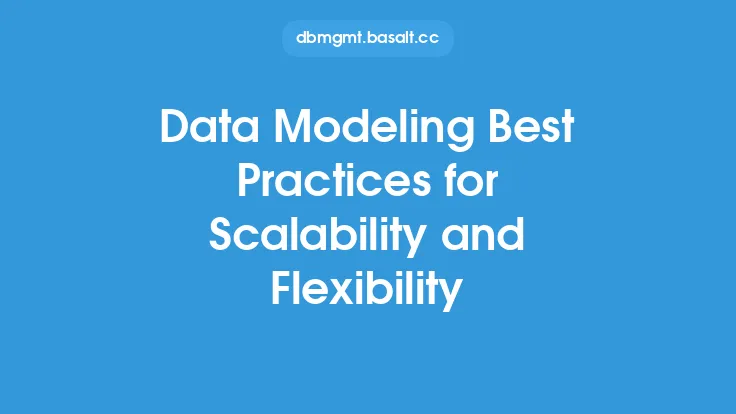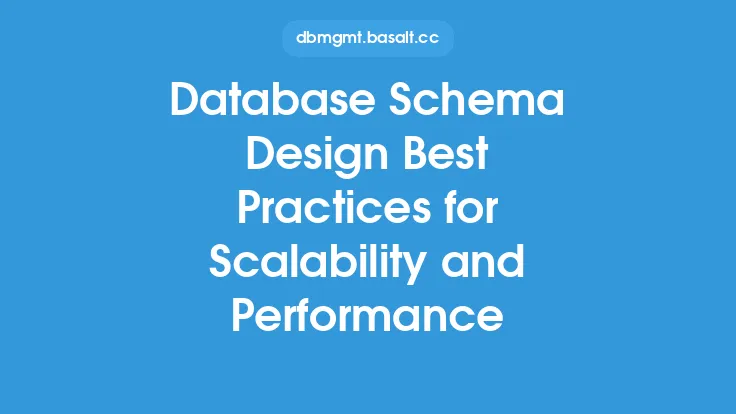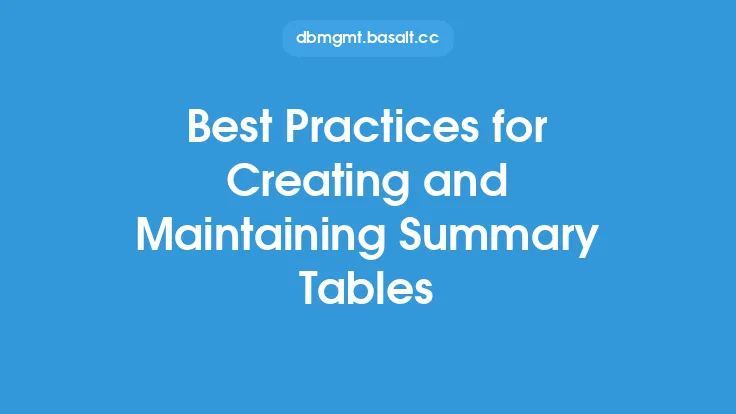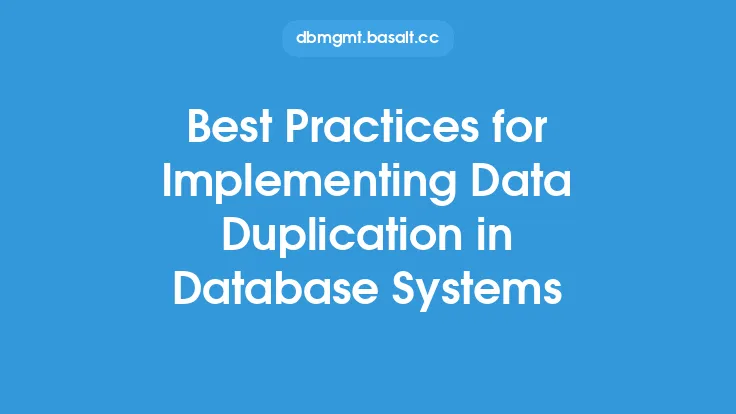Documenting and maintaining data models is a crucial aspect of data modeling, as it ensures that the data model is accurate, consistent, and easy to understand. A well-documented data model provides a clear understanding of the data structure, relationships, and constraints, making it easier for stakeholders to understand and work with the data. In this article, we will discuss the best practices for documenting and maintaining data models, including the importance of data model documentation, the different types of documentation, and the tools and techniques used to maintain data models.
Introduction to Data Model Documentation
Data model documentation is the process of creating and maintaining a detailed description of the data model, including its structure, relationships, and constraints. This documentation is essential for ensuring that the data model is accurate, consistent, and easy to understand. It provides a clear understanding of the data structure, making it easier for stakeholders to understand and work with the data. Data model documentation includes information such as entity descriptions, attribute definitions, relationship explanations, and data type specifications.
Types of Data Model Documentation
There are several types of data model documentation, including conceptual, logical, and physical documentation. Conceptual documentation provides a high-level overview of the data model, including the entities, relationships, and constraints. Logical documentation provides a detailed description of the data model, including the entities, attributes, and relationships. Physical documentation provides a detailed description of the physical implementation of the data model, including the database schema and storage layout.
Best Practices for Documenting Data Models
There are several best practices for documenting data models, including using standardized notation, providing clear and concise descriptions, and using visualization tools. Standardized notation, such as Entity-Relationship Diagrams (ERDs) or Unified Modeling Language (UML), provides a consistent and easy-to-understand representation of the data model. Clear and concise descriptions of entities, attributes, and relationships make it easier for stakeholders to understand the data model. Visualization tools, such as data modeling software or diagramming tools, provide a graphical representation of the data model, making it easier to understand and navigate.
Tools and Techniques for Maintaining Data Models
There are several tools and techniques used to maintain data models, including data modeling software, version control systems, and data governance frameworks. Data modeling software, such as ERwin or PowerDesigner, provides a graphical interface for creating and maintaining data models. Version control systems, such as Git or Subversion, provide a way to track changes to the data model and collaborate with other stakeholders. Data governance frameworks, such as Data Governance Council or Data Quality Council, provide a structured approach to managing and maintaining data models.
Data Model Versioning and Change Management
Data model versioning and change management are critical aspects of maintaining data models. Versioning involves tracking changes to the data model, including updates, deletions, and additions. Change management involves managing and approving changes to the data model, ensuring that they are consistent with the overall data strategy and architecture. Best practices for data model versioning and change management include using version control systems, maintaining a change history, and establishing a change approval process.
Data Model Security and Access Control
Data model security and access control are essential for ensuring that sensitive data is protected and that only authorized stakeholders have access to the data model. Best practices for data model security and access control include implementing access controls, encrypting sensitive data, and establishing a security framework. Access controls, such as user authentication and authorization, ensure that only authorized stakeholders have access to the data model. Encrypting sensitive data, such as credit card numbers or personal identifiable information, protects it from unauthorized access. Establishing a security framework, such as a data security policy or a security governance framework, provides a structured approach to managing and maintaining data model security.
Data Model Quality and Validation
Data model quality and validation are critical aspects of maintaining data models. Data model quality involves ensuring that the data model is accurate, consistent, and complete. Validation involves checking the data model against a set of rules and constraints, ensuring that it meets the requirements and specifications. Best practices for data model quality and validation include using data quality metrics, validating data models against business rules, and establishing a data quality framework. Data quality metrics, such as data completeness or data consistency, provide a way to measure the quality of the data model. Validating data models against business rules, such as data validation rules or data transformation rules, ensures that the data model meets the requirements and specifications. Establishing a data quality framework, such as a data quality policy or a data quality governance framework, provides a structured approach to managing and maintaining data model quality.
Conclusion
In conclusion, documenting and maintaining data models is a critical aspect of data modeling, ensuring that the data model is accurate, consistent, and easy to understand. By following best practices, such as using standardized notation, providing clear and concise descriptions, and using visualization tools, stakeholders can ensure that the data model is well-documented and maintained. Additionally, using tools and techniques, such as data modeling software, version control systems, and data governance frameworks, can help to maintain data models and ensure that they are aligned with the overall data strategy and architecture. By prioritizing data model documentation and maintenance, organizations can ensure that their data models are accurate, consistent, and easy to understand, providing a solid foundation for data-driven decision-making.





